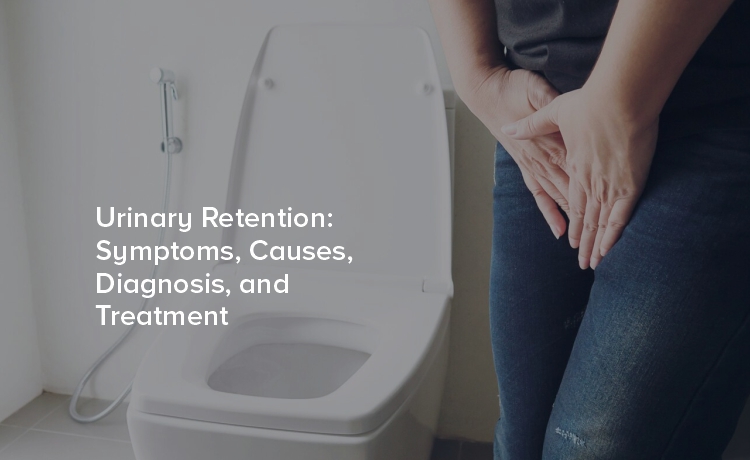
Urinary retention is a potentially serious medical condition characterized by the inability to completely or partially empty the bladder. The condition can be acute or chronic, and understanding its symptoms, causes, diagnosis, and treatment options is crucial for anyone experiencing this issue or for those in the healthcare profession.
The signs of urinary retention can vary from person to person and may depend on whether the retention is acute or chronic. Individuals experiencing urinary retention might notice the following symptoms:
Difficulty initiating urination: This can manifest as straining and hesitancy when attempting to urinate.
Poor urine stream: The force of the urinary stream may be much weaker than usual.
Frequent urination without relief: You may feel the urge to urinate more frequently, but only pass small amounts of urine (Urgency, Incomplete Emptying).
Pain and discomfort: In the lower abdomen or pelvic region when the bladder is full.
Overflow incontinence: A persistent dribbling of urine due to the bladder constantly being full.
Understanding these symptoms is a critical first step in recognizing the presence of urinary retention, and seeking medical advice should be the very next action.
Urinary retention can be the result of numerous underlying conditions, ranging from benign to potentially life-threatening. Some common causes include:
Obstruction: Certain medical conditions such as kidney stones, prostate enlargement (in men) stricture urethra, or constipation can physically block the flow of urine from the bladder.
Nerve problems: Conditions like multiple sclerosis, spinal cord injury, or nerve damage caused by diabetes can interfere with signals between the brain and the bladder, leading to retention.
Medications: Some medications can contribute to urinary retention as a side effect, particularly those used to treat colds, allergies, and depression.
Infections: Urinary tract infections (UTIs) can cause inflammation and swelling, leading to temporary retention until the infection resolves.
Understanding the underlying cause is paramount in developing a treatment strategy, which often begins with a comprehensive diagnosis.
Diagnosing urinary retention involves a thorough evaluation by a physician and may include several steps:
Medical History: Your doctor will ask about your medical history and any symptoms you're experiencing, which can provide valuable clues.
Physical Examination: A physical exam may reveal signs such as an enlarged prostate or neurological deficits.
Urinalysis: A urine sample can help identify any signs of infection or other irregularities.
Post-void Residual Measurement: This involves a simple ultrasound to measure how much urine is left in the bladder after urination.
Imaging Studies: In some cases, imaging studies like a RGU, CT scan or MRI may be necessary to visualize any blockages or structural issues in the urinary tract.
Urodynamic Testing: This specialized evaluation assesses the function of the bladder and may be used if an underlying neurological cause is suspected.
An accurate diagnosis ensures that the chosen treatments are directly addressing the root of the urinary retention.
The approach to treating urinary retention depends on several factors, including the underlying cause, the severity of the symptoms, and the patient's overall health. Treatment options may include:
Catheterization: The most immediate and often necessary treatment for serious urinary retention is to insert a catheter into the bladder to drain the urine. This may be a one-time procedure or required on an ongoing basis for chronic conditions.
Medication: If the retention is due to inflammation or swelling, medication can help alleviate symptoms and allow for normal urination. For men with prostate enlargement, alpha-blockers may be prescribed to help relax the muscles and improve urine flow.
Surgery: In cases of urinary retention caused by structural issues in the urinary tract, such as urethral stricture, prostatomegaly surgery may be necessary to alleviate the blockage.
Treatment for Underlying Conditions: If a specific condition is causing the retention, treating that condition can often resolve the urinary symptoms. This may involve antibiotic treatment for UTIs or other medications for underlying health issues.
Self-Care Strategies: In some cases, self-care strategies like double voiding (urinating, waiting a few minutes, then trying again) or pelvic floor exercises may help improve bladder emptying without the need for more invasive treatments.
A personalized treatment plan, often developed in consultation with a urologist, can significantly improve quality of life for those dealing with urinary retention.
For some individuals, especially those with chronic urinary retention, preventive measures can help manage the condition and reduce its impact on daily life. Preventive strategies may include:
Maintaining a Healthy Lifestyle: Eating a balanced diet, good bowel habits, getting regular exercise, and managing any chronic health conditions can help prevent certain causes of urinary retention.
Habits and Hygiene: Good toileting habits, such as not delaying trips to the bathroom, can help maintain healthy bladder function and prevent retention.
Regular Checkups: For individuals at risk of urinary retention, regular checkups and screenings can help identify and address potential issues before they become problematic.
By incorporating these preventive measures, it's possible to minimize the risk of urinary retention and its associated complications.
Coping with urinary retention, particularly when it is chronic, can be challenging. However, there are many lifestyle adjustments and support resources available that can help individuals manage their condition effectively:
Incontinence Products: Various incontinence products, from pads to adult diapers, can help manage urine leakage and offer peace of mind while living with urinary retention.
Communication with Healthcare Providers: Open and ongoing communication with healthcare providers is key in monitoring and managing urinary retention. Reporting any changes in symptoms or new challenges can help adapt the treatment plan as needed.
Urinary retention is a multifaceted condition that can arise from a variety of causes and affect people of all ages and genders. From recognizing its symptoms to understanding its underlying causes and seeking the best treatment options, this comprehensive guide provides a roadmap for managing urinary retention effectively.